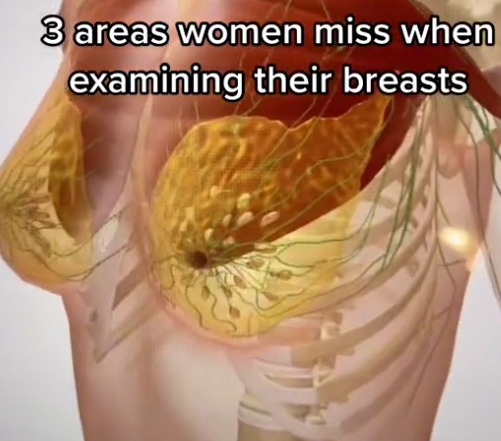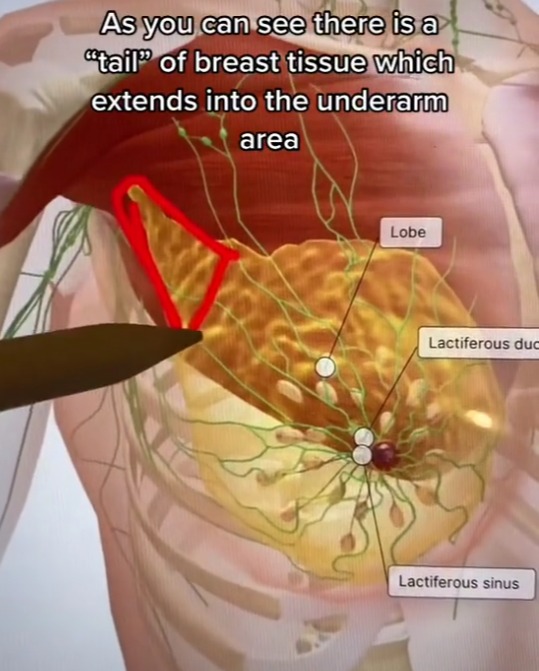CHECKING your breasts on a regular basis is key.
This is because examining your boobs can help spot signs of breast cancer – one of the most common kinds of the illness in the UK.

Dr Karan Rajan took to TikTok to help his followers detect breast cancer blind spots

The GP explained that breast cancer can develop in the armpit – even though it’s not part of the breast
While you might think you’re a pro when it comes to checking yourself out, one doctor has revealed there are blind spots that many people miss.
Taking to TikTok, GP Dr Karan Rajan posted a helpful video guide to where you need to take notice of.
He said the armpit is one area many people fail to check.
During the video he references a diagram of the breast and points to the part of the chest where the breast joins to the armpit.
“As you can see, there is a tail of breast tissue which extends to the underarm area.
“This is important because breast cancers can develop in the auxiliary tail – even though it doesn’t seem like part of the breast,” he explained.
The second place he said people often miss out when checking, is the collarbone.
“The breast tissue and the associated lymph nodes run under the collar bone area so make sure you check here,” he added.
Lastly, the third area that Dr Rajan said can be a blind spot – is behind the nipple.
Many people who are diagnosed with breast cancer will experience a change in their nipple – but when the cancer is behind the nipple, you might not detect the issue.
That’s why it’s key that if you spot anything that’s unusual for you, to see your GP.
In the UK there are around 56,000 cases of the illness each year.
Around one in seven women in the UK will be diagnosed with breast cancer in their lifetime, with this figure being one in eight in the US.
Checking ourselves is imperative, as the earlier the illness is detected, the faster it can be treated and the better chance you have of survival.
But knowing what you should be feeling for when it comes to a lump can be confusing.
Another expert, Dr Arif Kamal, a chief patient officer at the American Cancer Society said in most cases, a lump often feels like a round, hard area.
The expert said that this can either be deep in the tissue, or toward the skin itself.
“Typically it is not painful. It’s typically not easily movable but oftentimes fixed in a particular space, meaning it doesn’t shift in its location all that easily.
“In terms of shape, it is oftentimes round but sometimes it can be a little bit more irregular than that,” he told the HuffingtonPost.
When it comes to past experience, Dr Kamal said that many people have said their lump has felt like a pea in a pod, or even a frozen pea.
Most of the time, he said these lumps have been on the smaller side, but have the same texture as the vegetable.
“It’s generally on the smoother side for texture, generally more firm, generally not painful. And it generally does not feel like a cyst, which feels like a fluid collection – although even if a person feels a fluid collection, they should report that to their clinical team as well,” he added.






